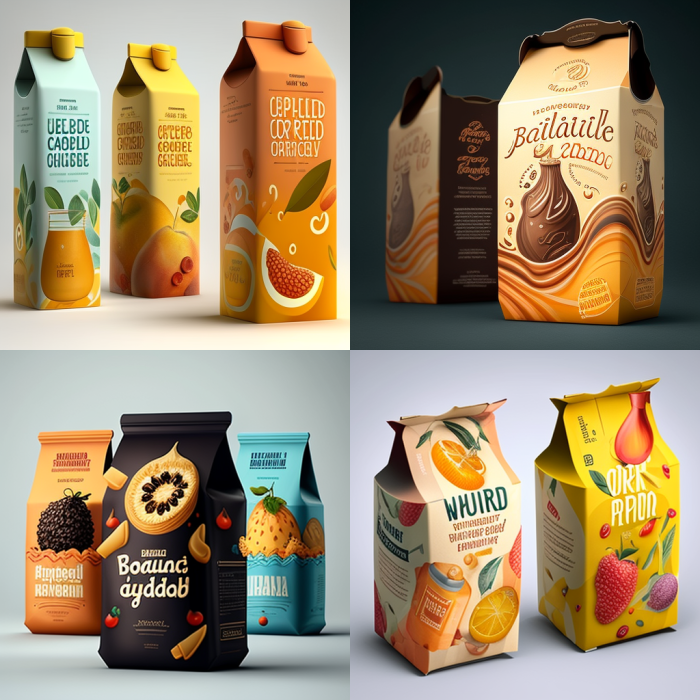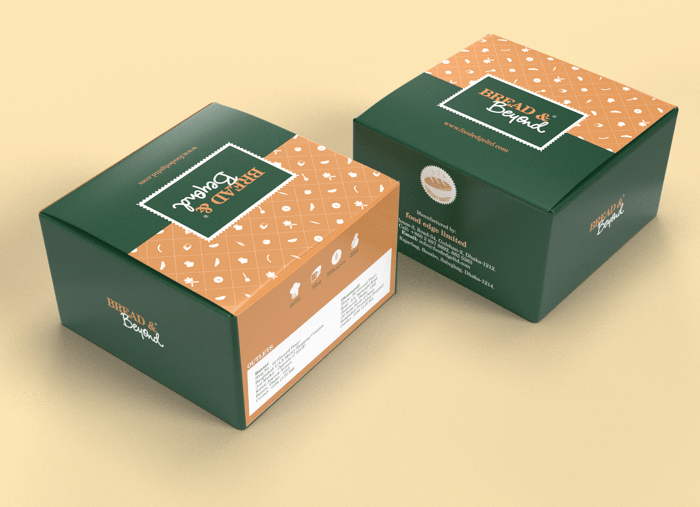Unveiling the Power of Packaging Design
Packaging design plays a crucial role in shaping a brand's identity and influencing consumer behavior. From eye-catching visuals to sustainability, every element is carefully crafted to make a lasting impression. Let's dive into the world of packaging design and discover its impact on the products we love.
Importance of Packaging Design
Packaging design plays a crucial role in branding as it is often the first point of contact between a product and a consumer. It serves as a visual representation of the brand and can significantly impact consumer perception and purchasing decisions.
Examples of Successful Packaging Designs and Their Impact
Successful packaging designs like Apple's minimalist and sleek packaging for its products have become iconic and synonymous with quality and innovation. This design approach has helped Apple stand out in a crowded market and create a strong brand identity that resonates with consumers.
Similarly, Coca-Cola's classic red and white packaging is instantly recognizable worldwide, contributing to the brand's longevity and success.
Influence of Packaging Design on Purchasing Decisions
Packaging design can influence purchasing decisions in several ways. Eye-catching and attractive packaging can grab the attention of consumers on the shelves, prompting them to pick up the product for a closer look. The use of colors, typography, and imagery can evoke emotions and convey brand values, creating a connection with consumers.
Additionally, packaging that communicates product information clearly and effectively can help consumers make informed decisions and build trust in the brand.
Elements of Effective Packaging Design

Effective packaging design involves a combination of key elements that work together to create a visually appealing and cohesive product presentation. These elements include color, typography, imagery, and shape, each playing a crucial role in capturing the attention of consumers and communicating the brand's message.
Color
Color is one of the most powerful elements in packaging design, as it can evoke emotions, convey messages, and differentiate a product from competitors. The choice of colors should align with the brand's identity and target audience. For example, vibrant colors may be used to attract a younger demographic, while muted tones can convey sophistication and luxury.
Typography
Typography refers to the style, size, and arrangement of text on a package. It is essential for communicating important information such as product details, benefits, and instructions. The right typography can enhance readability, create visual hierarchy, and reinforce brand personality.
Fonts should be consistent with the brand's voice and image.
Imagery
Imagery, including photographs, illustrations, or graphics, plays a significant role in conveying the product's features and benefits. High-quality images can evoke emotions, showcase product details, and create a connection with consumers. Imagery should be relevant to the product and brand values to resonate with the target market.
Shape
The shape of a package can influence consumer perception and usability. Unconventional shapes can make a product stand out on the shelf and create a memorable brand experience. The shape should complement the overall design and functionality of the packaging, enhancing the product's appeal and convenience for consumers.
Consistency in Branding
Consistency in branding through packaging design elements is crucial for building brand recognition and loyalty. By maintaining a cohesive visual identity across all packaging materials, including color schemes, typography, imagery, and shape, a brand can establish a strong and memorable presence in the market.
Consistent branding helps consumers easily identify and connect with the brand, fostering trust and loyalty over time.
Sustainable Packaging Design

As the world becomes increasingly aware of the environmental impact of packaging materials, the concept of sustainable packaging design has gained significant importance. Sustainable packaging aims to minimize waste, reduce carbon footprint, and promote the use of eco-friendly materials
Examples of Sustainable Packaging Materials and Benefits
There are several sustainable packaging materials that brands can utilize to reduce their environmental impact. Some examples include:
- Biodegradable Plastics: These plastics break down naturally over time, reducing the amount of plastic waste in landfills and oceans.
- Recycled Cardboard: Using recycled cardboard for packaging reduces the need for new materials and helps lower energy consumption during production.
- Mushroom Packaging: Made from mycelium, mushroom packaging is biodegradable, compostable, and can replace traditional styrofoam packaging.
Incorporating Sustainability into Packaging Design Strategy
Brands can incorporate sustainability into their packaging design strategy by:
- Choosing eco-friendly materials: Opting for materials that are recyclable, biodegradable, or made from renewable resources.
- Reducing packaging waste: Designing packaging that is minimalistic and efficient, reducing the amount of material used.
- Educating consumers: Communicating the eco-friendly aspects of the packaging to consumers, raising awareness and promoting sustainable practices.
Trends in Packaging Design
In the ever-evolving world of packaging design, staying on top of current trends is crucial to creating visually appealing and marketable products. Let's explore some of the latest trends shaping the industry.
Minimalism
Minimalism continues to be a dominant trend in packaging design, characterized by clean lines, simple typography, and a focus on negative space. Brands are embracing the less-is-more approach to convey sophistication and elegance.
Vintage Aesthetics
Another popular trend is the use of vintage aesthetics in packaging design. Nostalgic elements such as retro fonts, classic illustrations, and distressed textures evoke a sense of authenticity and timelessness, appealing to consumers seeking a connection to the past.
Bold Colors
Brands are increasingly opting for bold and vibrant colors in their packaging to stand out on crowded shelves and capture consumers' attention. Bright hues and eye-catching color combinations create a memorable visual impact and help establish brand identity.
Traditional vs. Modern Approaches
While traditional packaging design trends often focused on intricate details and elaborate graphics, modern approaches prioritize simplicity, functionality, and sustainability. The shift towards eco-friendly materials and minimalist designs reflects changing consumer preferences and a growing emphasis on environmental consciousness.
Impact of Digitalization
The rise of digitalization has revolutionized packaging design, offering new opportunities for customization, personalization, and interactive elements. Augmented reality, QR codes, and smart packaging solutions are transforming the way brands engage with consumers and enhance the overall product experience.
Last Recap
In conclusion, packaging design is not just about wrapping a product - it's a powerful tool that communicates brand values, attracts customers, and sets trends. By understanding the key elements and staying ahead of the latest trends, brands can create packaging that captivates and resonates with consumers.
Essential FAQs
How does packaging design impact consumer perception?
Packaging design can create a strong first impression, convey brand messaging, and influence purchase decisions by attracting and engaging consumers.
What are some key elements of effective packaging design?
Key elements include color, typography, imagery, and shape, which collectively contribute to the overall visual appeal and brand recognition.
Why is sustainable packaging design gaining importance?
Due to increasing environmental concerns, brands are shifting towards eco-friendly packaging to reduce waste and appeal to environmentally-conscious consumers.
How can brands incorporate sustainability into their packaging design strategy?
Brands can use recyclable materials, reduce packaging size, and communicate their sustainability efforts transparently to consumers.




